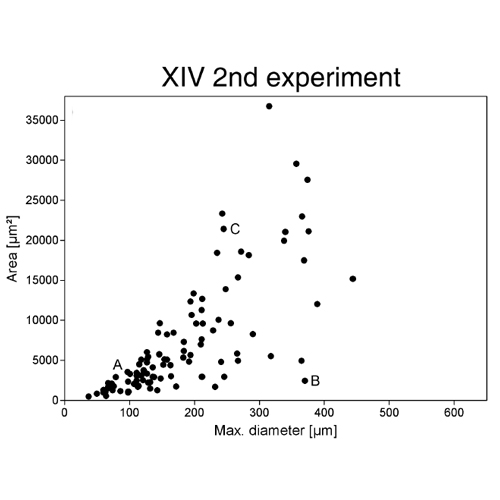Morphological and immunocytochemical characteristics indicate the yield of early progenitors and represent a quality control for human mesenchymal stem cell culturing
23-Apr-2009
Journal of Anatomy, 2009, DOI: 10.1111/j.1469-7580.2009.01065.x, Volume 214, Issue 5, pages 759–767 published on 23.04.2009
Journal of Anatomy, online article
Journal of Anatomy, online article
Human mesenchymal stem cells (hMSC) are a heterogeneous cell population, which is reflected in varying morphological and biological properties. Three subpopulations with intrinsic characteristics can be distinguished: small rapidly self-renewing cells, spindle-shaped cells and large, flattened cells. Unfortunately, it has neither been possible to morphologically define these distinct cells consistently, nor to relate them to specific surface marker features. Here, the primary hMSC subpopulations of three donors are clearly defined by maximum cell diameter and area. Furthermore, these cells were stained for the putative hMSC surface markers CD105, CD90 as well as CD73, and evaluated by three-colour flow cytometry and simultaneous multicolour immunocytochemistry. Interestingly, cell cultures with a high rate of triple-positive hMSC featured a higher content of rapidly self-renewing cells. On the other hand, a higher fraction of flattened cells correlated with a loss of one or more hMSC surface markers. The expression of CD73 showed the highest heterogeneity. Immunocytochemistry further confirmed that flattened cells mainly lack CD73 expression, whereas rapidly self-renewing cells were steadily positive for all three hMSC markers. In the literature, hMSC properties are especially conceded to rapidly self-renewing cells, whereas flattened cells have been suggested to represent early stages of lineage-specific progenitors. We reveal that among the recently suggested surface markers, CD73 is the most sensitive, as it seems to be down-regulated in the early stages of differentiation. Our morphological and immunocytochemical characterization of hMSC subpopulations indicates the yield of early multipotent hMSC and thereby provides a quality control approach for hMSC culturing.











